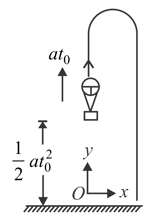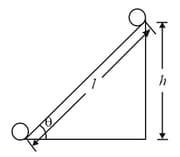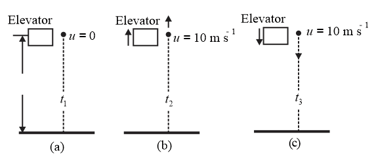A balloon starts rising upwards with constant acceleration and after time second, a packet is dropped from it which reaches the ground after seconds of dropping. Determine the value of



Important Questions on Kinematics I
(a) Show that the velocity acquired by a particle in sliding down an inclined plane is the same as that acquired by a particle falling freely from rest through a distance equal to the height of the inclined plane.
(b) Find the time taken in sliding a particle down the whole length of the incline.
Ball is released from the top of a smooth inclined plane, and at the same instant ball is projected from the foot of the plane with such a velocity that they meet halfway up the incline. Determine:
(a) the velocity with which balls are projected and
(b) the velocity of each ball when they meet.

Mark the following statements as true or false.
(a) (i) A ball thrown vertically up takes more time to go up than to come down.
(ii) If a ball starts falling from the position of rest, then it travels a distance of during the third second of its fall
(iii) A packet dropped from a rising balloon first moves upwards and then moves downward as observed by a stationary observer on the ground.
(iv) In the absence of air resistance, all bodies fall on the surface of earth at the same rate.
A ball thrown up from the ground reaches a maximum height of 20 m. Find:
(a) Its initial velocity.
(b) The time taken to reach the highest point.
(c) Its velocity just before hitting the ground.
(d) Its displacement between and .
(e) The time at which it is above the ground.
A ball is dropped from an elevator at an altitude of . How much time will the ball take to reach the ground if the elevator is

(a) Stationary?
(b) Ascending with velocity ?
(c) Descending with velocity ?
